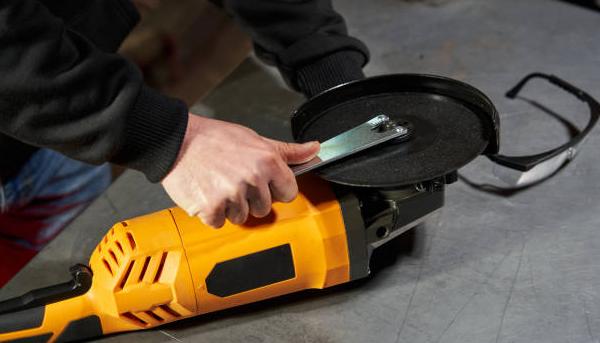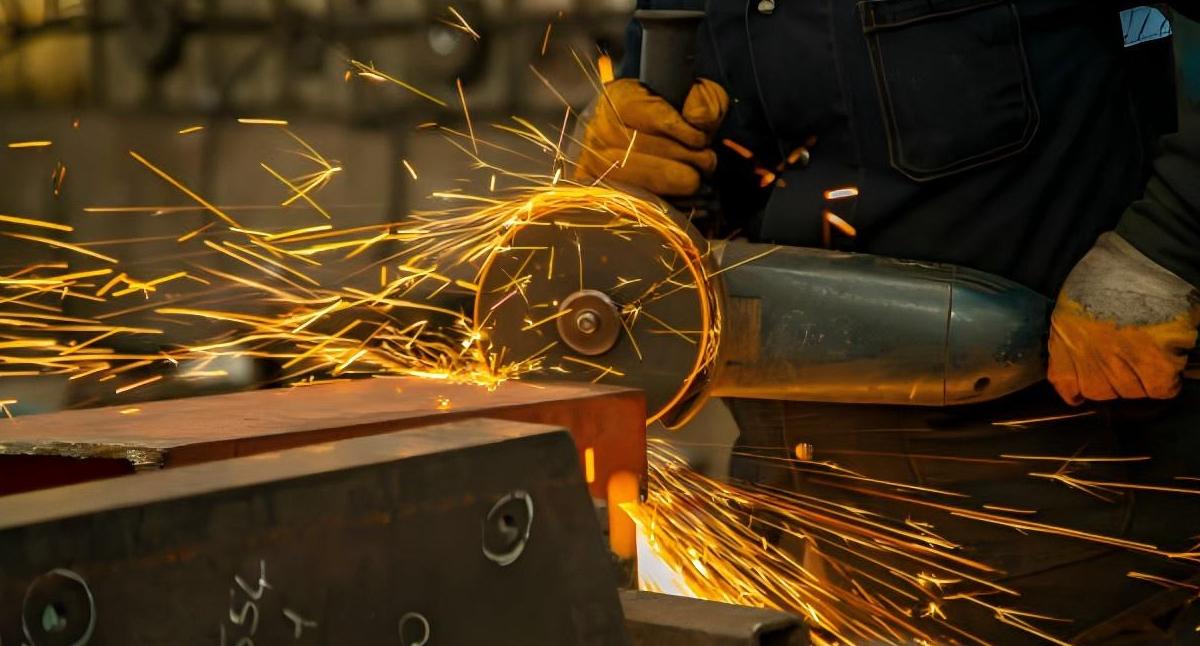Using a cutting disc on a grinder may seem straightforward, but installing it correctly is crucial for achieving precise cuts, maintaining tool longevity, and ensuring user safety. Incorrectly mounted discs can lead to poor performance, rapid wear, and increased risk of accidents. In this guide, we’ll cover everything you need to know about placing a cutting disc on a grinder the right way, focusing on different types of discs, orientation methods, safety considerations, and common mistakes to avoid.
Understanding Cutting Discs and Their Function
A cutting disc, also known as a cutoff wheel, is a thin abrasive disc designed for making clean cuts through various materials like metal, stone, concrete, and wood. These discs are typically made from aluminum oxide, silicon carbide, or zirconia alumina, each suited to different materials and applications. The design of cutting discs makes them efficient for slicing through materials at high speeds. Using the disc in the correct orientation ensures efficient cutting, consistent performance, and a clean finish. An improperly mounted disc may cause chipping, kickback, or wobbling, which not only compromises the quality of the work but can also lead to safety hazards.
How to Determine the Right Way to Install a Cutting Disc
Most cutting discs are designed to be installed with a specific side facing outward. This orientation is typically indicated on the disc itself, often with:
- Printed Labels or Markings: Many cutting discs feature a label, brand logo, or other markings on one side. In general, the labeled side should face outward, visible to the user when installed.
- Direction Arrows: Some discs come with direction arrows printed on them, indicating the intended direction of rotation. The grinder’s wheel should spin in the direction of these arrows.
- Raised Hub or Flange Side: Some discs have a raised hub or flange on one side, intended to face inward toward the tool, ensuring the disc is firmly attached and stable during operation.
Installation Steps for a Cutting Disc on a Grinder
Follow these steps to correctly install a cutting disc:
- Gather Safety Gear: Before handling any grinder or disc, wear appropriate safety gear, including safety glasses, gloves, and ear protection.
- Unplug or Power Down the Grinder: If the grinder is battery-powered, remove the battery to ensure it doesn’t accidentally turn on during installation. For corded grinders, make sure it’s unplugged.
- Inspect the Disc and Grinder: Check the disc for any visible cracks, chips, or warping, as a damaged disc could break apart during use. Also, inspect the grinder’s spindle and flange to ensure they’re clean and free of debris.
- Identify the Right Orientation of the Disc: Use the tips above to identify the correct side of the disc that should face outward. For most discs, the label side faces outward.
- Place the Disc on the Grinder Spindle: Align the hole in the center of the disc with the grinder’s spindle. Ensure it sits flush against the inner flange.
- Secure with the Outer Flange or Lock Nut: Tighten the outer flange or lock nut over the disc using a wrench if required. Ensure it’s tight enough to hold the disc securely without over-tightening, which can crack the disc.
- Reinstall Power Source: Once the disc is securely attached, reconnect the power source, but do not start the grinder just yet.
- Conduct a Test Spin: Before cutting, turn on the grinder and allow it to reach full speed to check for wobbling or any irregular movements. If it’s running smoothly, proceed with the task.
Why Orientation Matters for Cutting Disc Performance
Using the disc with the correct orientation affects both its performance and durability. Here’s why:
- Safety: The correct installation reduces the risk of kickback and disc breakage. Improperly installed discs are more likely to wobble or loosen, increasing the chance of injury.
- Efficiency and Cutting Speed: The abrasive side of the disc is designed for optimal cutting when facing the material. Using the disc backward can slow down cutting speeds and create rougher cuts.
- Disc Longevity: Incorrectly mounted discs tend to wear unevenly, causing premature damage or breakage.
Common Types of Cutting Discs and Their Mounting Differences
There are various types of cutting discs, and each may have specific mounting requirements. Let’s take a closer look:
- Metal Cutting Discs: These typically have a clear label on one side and may include direction arrows. They’re relatively thin to provide precise cuts in metal and should always be installed with the labeled side facing outward.
- Diamond Blades: Common for cutting concrete or masonry, diamond blades are often thicker and may have a segmented edge. Most diamond blades will have directional arrows indicating the correct direction of rotation, which should align with the grinder’s rotation.
- Flap Discs and Grinding Discs: While not strictly cutting discs, they’re also commonly used on grinders. Their abrasive flaps or surfaces should face outward for proper wear and performance.
Safety Considerations When Installing and Using Cutting Discs
Safety should be a top priority when working with any type of grinder or cutting disc. Here are some critical safety tips:
- Inspect the Disc Before Installation: A cracked or damaged disc can shatter at high speeds, leading to severe injuries. Replace any disc that appears worn, chipped, or cracked.
- Check the Speed Rating: Ensure the disc’s maximum RPM rating matches or exceeds the grinder’s speed. A disc with a lower RPM rating than the grinder’s speed can break apart during use.
- Wear Protective Gear: Eye protection, gloves, and ear protection are essential. Grinders produce high-speed debris that can injure eyes or skin if not properly protected.
- Keep the Workspace Clear: Ensure there are no obstructions in the cutting path, and that bystanders are at a safe distance.
- Proper Positioning: Hold the grinder at a slight angle when cutting to reduce the risk of kickback, and ensure your body is not in line with the disc.
Common Mistakes to Avoid When Installing a Cutting Disc
Here are several frequent mistakes that can lead to poor performance or accidents:
- Installing the Disc Backward: Always follow the label and orientation guidelines. Installing the disc backward may reduce its efficiency and cause kickback.
- Over-Tightening the Lock Nut: While securing the disc is essential, over-tightening can put unnecessary stress on the disc, increasing the risk of cracks or shattering.
- Neglecting to Check Directional Arrows: Directional arrows are there to help align the disc with the grinder’s rotation. Ignoring them can lead to uneven wear and reduced cutting quality.
- Using a Damaged Disc: Even minor cracks can quickly lead to catastrophic disc failure at high speeds. Always inspect discs thoroughly and replace them if damaged.
Troubleshooting Installation Issues
If you’re experiencing issues with disc installation or performance, consider these troubleshooting tips:
- Wobbling Disc: If the disc wobbles after installation, double-check that the lock nut and flange are properly tightened. Wobbling can also occur if the disc or grinder spindle is damaged.
- Overheating: If the disc becomes too hot, it may indicate that the disc is not suited for the material or that you’re applying too much pressure. Consider using a different type of disc or letting it cool between cuts.
- Difficulty Cutting: If the disc struggles to cut, make sure it’s facing the correct direction, and that it’s rated for the material being cut. A backward disc will often perform poorly.
Final Thoughts
Understanding how to correctly install a cutting disc on a grinder is essential for safety and efficiency. Always check the disc’s orientation, inspect for any damage, and follow proper installation steps. With the right setup, a correctly mounted cutting disc can make precise cuts effortlessly, whether you’re working with metal, masonry, or other materials. Remember, safety is paramount; taking a few extra minutes to ensure the disc is installed correctly can make all the difference in your project’s success and your personal safety.


